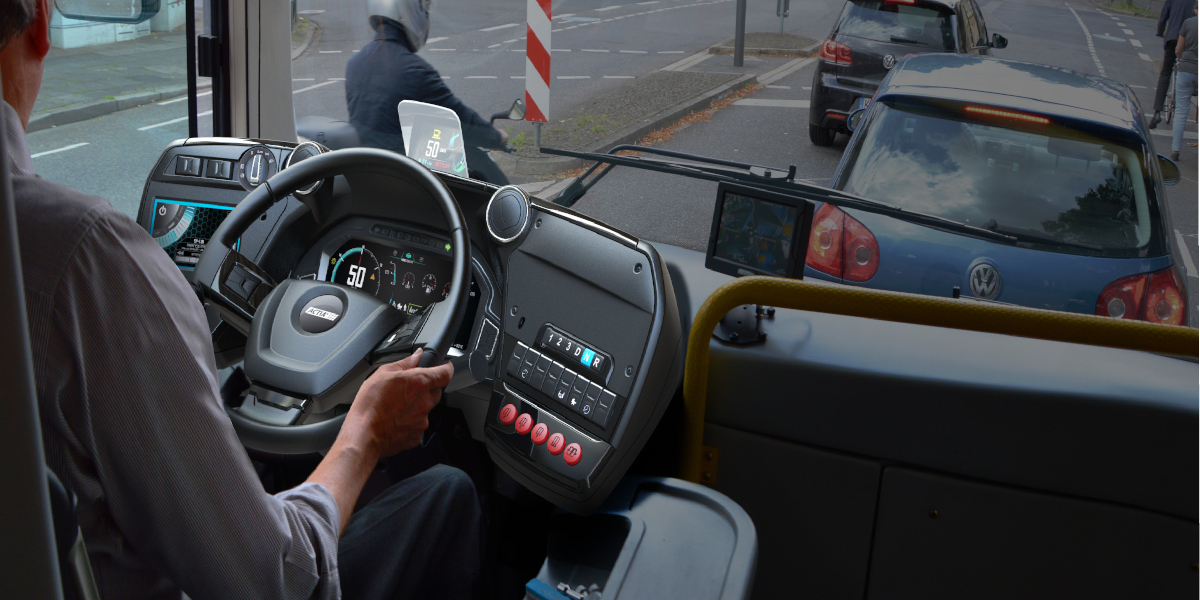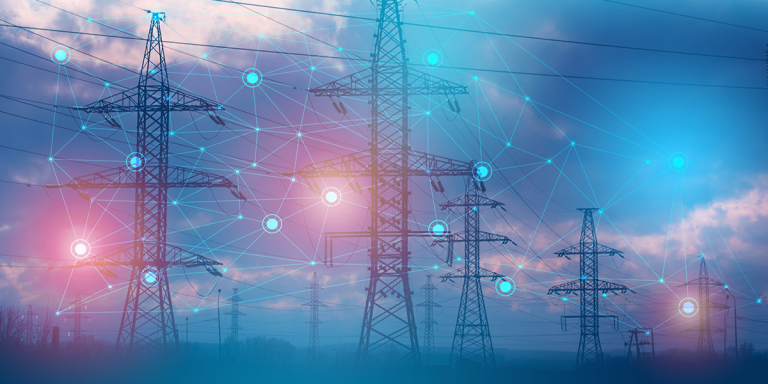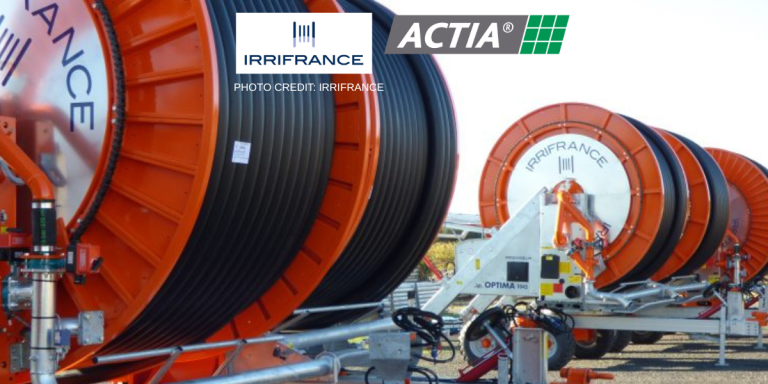Trends in driver workplaces for commercial and off-road vehicles mainly focus on design, flexibility and robustness. These trends illustrate the importance of ergonomics and the perceived quality of cabs and driver’s compartments. Vehicles or machines are user-centric.
Therefore, the challenge for ACTIA lies in offering Smart and efficient HMIs with high levels of perceived quality. For vehicles operating in harsh environments, the constraints related to rugged design come in addition to these requirements.
“Managing the market’s constraints is a technological challenge for every range of vehicles: buses and coaches, lorries, construction vehicles or agricultural machinery.” Explains Sébastien Blachère, Group Smart HMI Product Director at ACTIA, filling us in on the strengths of the ACTIA range.
DRIVERS WANT “AESTHETIC AND SAFE” WORKPLACES
Workplaces have been more driver-oriented for several years now. In terms of style, drivers want “aesthetics and safety”. The trend is leaning towards upgrading vehicles and equipment. It is not uncommon for manufacturers to call upon industrial designers to enhance their vehicles.
We can observe an increased use of aesthetic codes in the automotive industry. There is sometimes the radical application of a futuristic style, like the latest “Concept Tractors”, for example.
“The challenge we face in our research and development is to succeed in combining the desired aesthetic codes with a sometimes extreme machine environment that requires the ruggedisation of our solutions. Our designers work closely with our customers to design a product that is in harmony with the make and signature of the vehicle, while meeting their technical specifications.”
Stresses Sébastien Blachère.
THE NEED FOR SYSTEM INTEROPERABILITY IN DRIVER WORKPLACES
Whether for commercial vehicles or special equipment, the environments, infrastructures and multiplicity of onboard tasks all make driving more and more demanding. The driver has to interact with a whole host of equipment through a multitude of screens.
“At ACTIA, we design interoperable devices. We make our system scalable to minimise the quantity of HMI components in the vehicle. By streamlining the number of screens, we improve the user’s experience while helping to reduce vehicle costs.”
Underlines Sébastien Blachère.
The new workplace are more ergonomic, functional and comfortable. This is particularly true for the user interfaces, all of which are screens that are usually tactile.
ERGONOMIC GRAPHICAL INTERFACES
Ideal graphical interfaces make it easier to handle the features of the vehicle and make configuration more intuitive. Workplace customisation means the cab is highly functional. The allocation of the displays and controls is as flexible as using the main display.
The electronic components are freely programmable in the same development environment. This makes it possible to develop coherent and harmonised modules for the driver’s environment.
ACTIA’s smart HMI range includes screen solutions, clusters or a complete cab. For example, the Podium dashboard, a flagship product in the range, is fully customizable.
ACTIA’s smart display offering incorporates technological features with high perceived value, such as:
- Full HD,
- Optimised luminance and contrast,
- High-quality touch screens,
- Screens that can be used while wearing gloves.
Built-in ambient light sensors can adapt the brightness of the displays to all conditions of use. This ensures high rates of use.
“Our products are designed to cope with intensive use in extreme outdoor conditions. I think we have managed to find solutions with high perceived value that are also robust.” States Sébastien Blachère.
HIGHLY CUSTOMISABLE GRAPHICAL INTERFACES
ACTIA’s displays include a powerful hardware platform that runs the Linux operating system. Applications such as Embedded Wizzard or QT (application programming interface) have been pre-configured to design the graphical user interface.
These software tools make it possible to generate animated graphical interfaces and offer the customer a wide range of possibilities for creating their application interface in 2 or 3D. However, for customers who do not have the engineering capacity required for such developments, ACTIA can provide pre-installed, ready-to-use graphical interfaces.
That way, the customer customises their graphical interface via a simple configuration in order to stay in line with the brand’s codes and signature.
A SCALABLE AND MODULAR RANGE
The variety of configurations on offer is one of the key advantages of ACTIA displays for industrial vehicles. ACTIA designs flexible displays that allow customers to configure the screen definition according to their needs.
To do this, ACTIA inputs technical features as soon as the products are designed. This is also a major line of development in ACTIA’s smart HMI range. It greatly facilitates cab upgrades or alterations. ACTIA solutions can thus keep up with changes made to a range of vehicles more rapidly while limiting the cost of redesign.
ACTIA displays include all the basic features. They are an autonomous and cost-effective solution for the manufacturer. These products interact with the latest generation of digital cameras and communication networks: GMSL2, CAN FD, BroadReach.
These interfaces are available as standard in all the electronic architectures. They can also be specifically adapted. This modularity is the advantage offered by ACTIA, a benefit that draws on the Group’s expertise in vehicle architecture and onboard systems, particularly for harsh environments.
BUILDING AI INTO DRIVER WORKPLACES
The functionality of HMI products is constantly evolving and ACTIA is continuously rethinking the dashboard of the future. In the past, you checked the speed of your vehicle on a gauge, today it is displayed right next to your favourite song on a large TFT LCD screen.
The ergonomics of the product and its graphical interface are at the core of ACTIA’s ideas. The challenge is to always provide the driver with the right information at the right time.
In professional environments, the latest generations of ACTIA displays are able to integrate image processing features such as cameras, of course, but also radars and sensors.
ACTIA displays will also be able to process artificial intelligence-related features such as the detection of people and objects around the vehicle to make it safer to use. Existing technological blocks will thus enrich our services and our range of products.
Visit public transport website Contact our Public Transport experts





